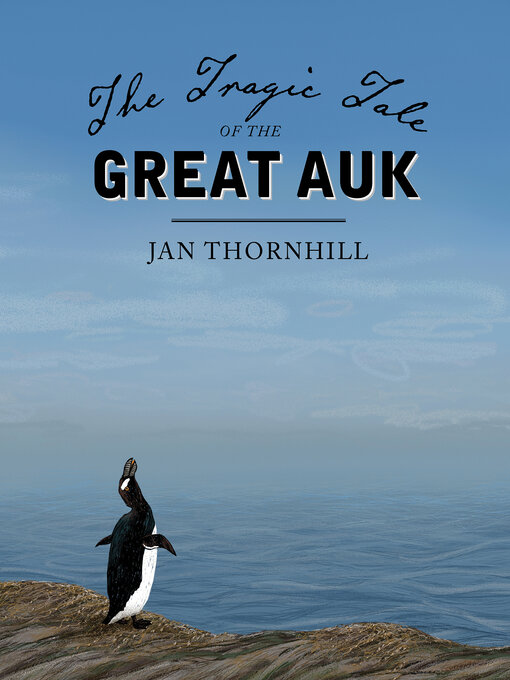For hundreds of thousands of years, Great Auks thrived. And then they were gone ...
For hundreds of thousands of years Great Auks thrived in the icy seas of the North Atlantic, bobbing on the waves, diving for fish and struggling up onto rocky shores to mate and hatch their fluffy chicks. But by 1844, not a single one of these magnificent birds was alive.
In this stunningly illustrated non-fiction picture book, award-winning author and illustrator Jan Thornhill tells the tragic story of these birds that "weighed as much as a sack of potatoes and stood as tall as a preteen's waist." Their demise came about in part because of their anatomy. They could swim swiftly underwater, but their small wings meant they couldn't fly and their feet were so far back on their bodies, they couldn't walk very well. Still the birds managed to escape their predators much of the time ... until humans became seafarers.
Great Auks were pursued first by Vikings, then by Inuit, Beothuk and finally European hunters. Their numbers rapidly dwindled. They became collectors' items — their skins were stuffed for museums, to be displayed along with their beautiful eggs. (There are some amazing stories about these stuffed auks — one was stolen from a German museum during WWII by Russian soldiers; another was flown to Iceland and given a red-carpet welcome at the airport.)
Although undeniably tragic, the final demise of the Great Auk led to the birth of the conservation movement. Laws were eventually passed to prevent the killing of birds during the nesting season, and similar laws were later extended to other wildlife species.
Correlates to the Common Core State Standards in English Language Arts:
CCSS.ELA-LITERACY.RI.4.3
Explain events, procedures, ideas, or concepts in a historical, scientific, or technical text, including what happened and why, based on specific information in the text.
CCSS.ELA-LITERACY.RI.4.4
Determine the meaning of general academic and domain-specific words or phrases in a text relevant to a grade 4 topic or subject area.


